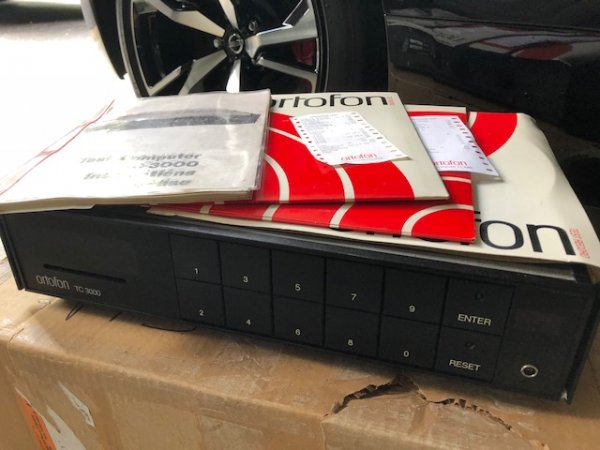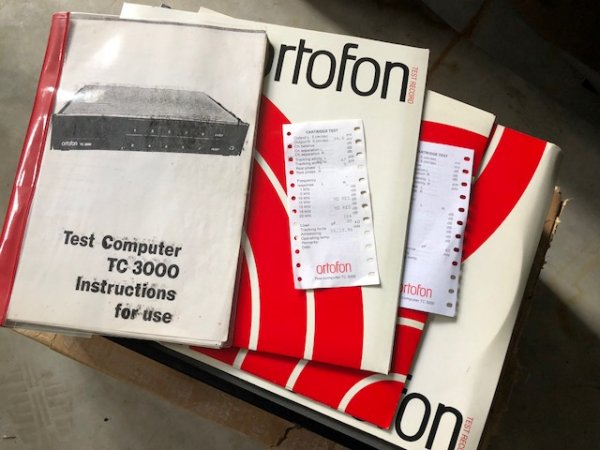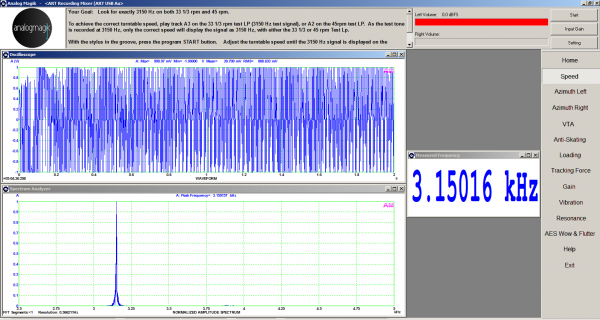I think you made your own argument. These types of test records are not readily available anymore. Even if they were , they were not used by a typical consumer. The AM puts a package together to relate what you should hear to known parameters of set up with the tools ( records) to do so. Of course, this is nothing new except that we now have powerful computers at home (laptops) and versatile and cheap downloadable software and sound cards for fft analysis or use of a scope etc. We can use this "cheap" technology at home and don't need an engineering lab with 100s of thousands of dollars worth of hardware to this.
Of course, you can choose to do none of it. I would expect most vinyl enthusiasts to know how to set up a cartridge mechanically or know someone to do it for them and get good results.
With this software it should be able to relate those mechanical adjustments to numbers that make sense so you can see directionally where you are going.
I would expect that this kit will be bought by hard core enthusiasts or mostly dealers to help their clients.
If you want to build a shed in your yard you can buy a kit and follow the directions for predictable results or you can go to the lumber yard and buy all the lumber and cut the rafters and beams your self and rely on your capability to end up with something that works. The AM is the kit.
YMMV and all that.
Your sentiments echo mine. In the audio world there certainly is an obsession with minimizing unwanted variation....why else would manufactures build turntables that weigh in at tens if not hundreds of lbs, insist on speed control, spend not insignificant money on alignment devices, fixate on whether 60 or 75 ohm cartridge loading is better and spend small fortunes on copper wires. The list is seemingly endless.
Cartridges are a great examples. Small, delicate devices that, for the creme de la creme, are outrageously priced. Why is that? A good portion of that is due to the labor involved. I don't think I am wrong in saying that for the most part, the best of the best are hand made. We buy handmade pottery because each piece is unique. Similarly, I'd say that no two Koetsu, Ikeda or ZYX cartridges are exactly alike. So how does the logic fit to say that one specific cartridge alignment fits all? Don't get me wrong, I believe there is an optimal (and generally predictable) landing point regardless of tonearm/cartridge combo, I just think that with certain variations in the construction process you may have to venture outside of the statistical norm to achieve optimum results.
Which brings me to yesterday's experiment. Not having the patience to wait on scope time, I decided to mount an ancient cartridge on my Graham, a Monster Alpha2 which coincidentally is an early Nakatsuka San design. I used my Graham alignment gauge to set preliminary alignment and then proceeded to use AM to fine tune. As might be expected the numbers were not perfect but pretty close for first pass IMD, in the range of 7-9%, certainly over what is desired but not outrageous. A couple of small tweaks to zenith and azimuth reduced %IMD to around 4% and could do no better with the constraint of staying within the jig bounds. Channel crosstalk was between -25 and -26 db. I had a quick listening test and for a 30-40 yr old cart, it sounded pretty good. I then removed the wand and placed it in the Graham jig and had a look. Depending on how I wanted to wiggle things around, the Alpha2 was pretty much spot on according to the jig.
Time to re-install the Universe II. Using the Graham jig for initial set up and AM for fine tuning once again found IMD elevated on the ZYX...12-14% this time. Using only small tweaks to zenith, the best I could get were numbers in the range of 7-9% IMD with -26 dB crosstalk. A listening test revealed that indeed there is a big step up from the Alpha2 which was as it should be and not a surprise. And no surprise to me that the ZYX did not sound as good as it did the night before with the more radical alignment. Another quick check of final alignment in the jig and found it to be slightly off center from where Graham would have it.
So back to work with AM to see where data took me and I ended up pretty much in the same location as before with 3% IMD (Richard Mak reports that he gets less than 2% with the various ZYX carts he has) so I probably have more work to do. Channel crosstalk was back up and a bit improved at -29 dB each. Listening results were back to what I had experienced the night before. By the way, I am finding that with experience, use of AM is a much faster process. I completed all of the above in about 2 hours.
It is very clear to me that for what ever reason, my ZYX is not willing to play by the established rules. If I were to accept the fact that this microdot is where my stylus *must* be located, damn the torpedoes, then I would be denying myself a much better listening experience. I chose instead to let the data take me to a spot that allowed my cartridge, flawed or not, to work very well indeed.
As a side note, I did check with Richard Mak concerning replacement vinyl and he indicated that yes, if you have the set, he will sell replacements if needed.
Brock










